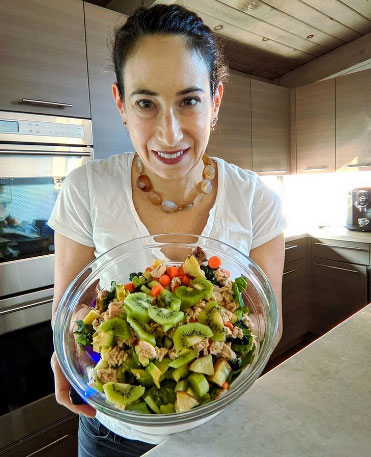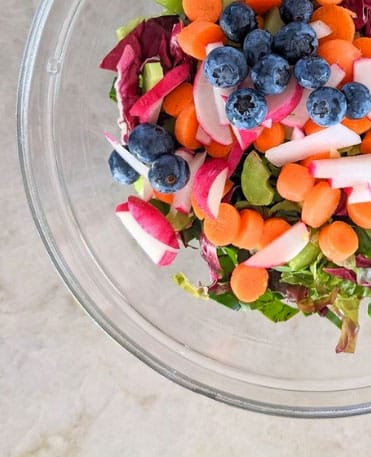 Habits are truly one of the hardest things to start. They take, on average, 66 days to solidify and become a routine habit. However most people give up sooner than that. When it comes to autoimmune diseases, diet is one of the most effective ways to lower inflammation and improve symptoms. I encourage my clients to implement both short and long term habits to help them on their healing journey. We discuss how to create new dietary habits and how to make sure you stick with them.
Habits are truly one of the hardest things to start. They take, on average, 66 days to solidify and become a routine habit. However most people give up sooner than that. When it comes to autoimmune diseases, diet is one of the most effective ways to lower inflammation and improve symptoms. I encourage my clients to implement both short and long term habits to help them on their healing journey. We discuss how to create new dietary habits and how to make sure you stick with them.
How to Create a Habit
According to James Clear, the author of Atomic Habits, there are 4 simple steps in creating a habit: cue, craving, response and reward. A cue is a trigger that helps you start a behavior. Craving is the motivation or desire for that behavior. Response is the actual habit, and reward is the end goal of the habit. While this all seems great, how does this apply to diet?
Clear breaks this down further into the four laws of creating either a good habit or a bad habit. When it comes to diet, we are trying to eat more whole foods (good habit) and less sugar or processed foods (bad habit). In forming a good habit, there is a law of behavior change framework. The framework contains 4 laws that correspond to each of the habit forming steps. The laws are: 1) Make it obvious (cue), 2) Make it attractive (craving), 3) Make it easy (response), 4) Make it satisfying (reward).
When you are trying to break a bad habit, like eating too much sugar or processed food, you do the opposite of creating a good habit. The framework flips to: Make it invisible (cue), make it unattractive (craving), make it difficult (response), make it unsatisfying (reward).
Let’s take an example of eating more vegetables. The cue would be having vegetables available in your refrigerator that are prepped and ready to eat. The craving would include a great recipe that you enjoy that includes vegetables, the response is an easy recipe that you can either whip up quickly or have already cooked and is ready to eat, and the reward would be eating this dish and thoroughly enjoying it.
Two Key Approaches for Diet Changes
The key framework for anti-inflammatory eating is increasing whole foods and reducing processed ones. It is really as simple as that. But, clearly it is not easy, otherwise everyone would be doing it. So here are a few ways you can start implementing healthy eating habits to start feeling better.
Cold Turkey
I believe it takes about 10 days of a very strict clean diet to start seeing an improvement. If you are a person who can cut a lot out for a short period of time, I would recommend this as a good starting point. Most people need to see some sort of result to stick with a habit change. If they don’t see a result, motivation will be lost. When I say clean diet, I mean absolutely no processed foods. This includes all refined sugar, grains, additives, flavors, colors, gums, stabilizer and any other non-food ingredient. You can take it a step further by cutting out common inflammatory foods like gluten, dairy, corn, soy, nuts and grains.
Step Down Approach
Most people feel very overwhelmed by big changes in diet. If this is you, the best approach is to set an overall goal or habit, and then break that habit into smaller steps. Let’s say your overall habit is eating an anti-inflammatory diet to reduce autoimmune symptoms. Step one might be “eat more vegetables” or “cut out refined sugar”. You can make these more specific by saying “I will not eat any foods with refined sugar for 6 out of 7 days a week for 2 weeks.” Then, in order to execute this goal, you want to make sugar invisible (remove it from your home), make it unattractive (visualizing swollen joints or fatigue when you eat it), make it difficult (remove all access to refined sugar) and make it unsatisfying (be mindful when you do eat sugar and notice how it makes you feel).
Having an accountability partner can also really help. Some clients find journaling helps them stay accountable, because they don’t want to write down that they ate sugar.
Diet Habits to Help Implement Change
Whatever diet change you are trying to implement, here are my top ways to help you be successful:
Be very specific about your goals
Each goal should mirror a SMART goal – specific, measurable, achievable, relevant and time-bound. The goal mentioned above about refined sugar is an example of a smart goal. These goals work because they give you a clear and structured approach to reaching your desired action. You know after that specific amount of time if you were successful or not. Using short term goals is also a lot easier to swallow when working with larger goals like health and long term dietary habits.
Have a plan for your meals and snacks
This falls under the response step of a habit. You want to make habit change easy. When it comes to food, the easiest way to do this is to have a weekly plan for what you are going to eat. This will probably include meal planning and food prepping. The number one reason why my clients fail on goals is when they forget to plan, prep or bring food with them. It happens when you least expect it because a) life get really busy and b) unexpected events happen. So, you have to be ready when life throws everything at you.
Establish non-food rewards for achieving your goals
While dietary changes can really help, sometimes it is hard to see the long term benefits, especially if you’ve been making changes for a while. The incremental changes tend to minimize over time. So, establishing a non-food reward system for being consistent with your eating habits is a great way to maintain motivation. Whether it is a manicure, spa day, shopping spree or vacation, make your reward something to look forward to.
Track your progress
Symptom changes may not always be obvious. Many times, dietary changes bring on symptom changes that people do not always expect or think need change, like digestive issues, energy or something totally random like post-nasal drip. Using a symptom tracker can be really helpful to see progress and to stay motivated.
Habits are hard to form, but not impossible. With a little structure and plan, you should be able to create meaningful and lasting dietary habits that will help you reach those health goals. If you need more support, contact me. I love helping people implement positive and lifelong habits. You can also check out my socials (Instagram, Facebook and YouTube) for more dietary and lifestyle tips.


